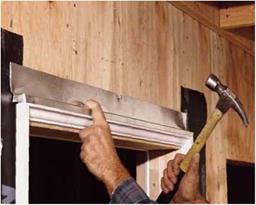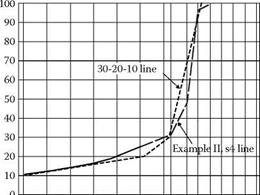Installing French Doors
Installing double doors requires more plumb and level readings, shim adjustments, and—above all—more patience than hanging a single door, but the procedure is much the same. So we’ll zip through the steps covered earlier to get to the heart of the matter. figuring out why the doors don’t meet perfectly in the middle and what to do about it.
► Measure the RO to make sure it’s big enough to install the door frame.
► Using a 6-ft. spirit level, see if the floor is level and the sides of the RO are plumb. Also check the walls on both sides of the RO for plumb. If the bottom of the opening is more than !/i in. out of level, correct the situation. French doors are wide and heavy and need to rest solidly on a level opening. Otherwise, they can rack and bind.
|
|











 One good way of explaining shear is to think of it as a combination of compression and tension stresses. Remember that the top surface of a beam is in compression, the bottom surface is in tension, and the centroid (middle part of the beam) is neutral (thus also called the neutral axis.) Fig. 2.8a shows the compression and tension forces at one end of a beam, where it is supported over a post or wall. The arrows show the compression and tension forces...
One good way of explaining shear is to think of it as a combination of compression and tension stresses. Remember that the top surface of a beam is in compression, the bottom surface is in tension, and the centroid (middle part of the beam) is neutral (thus also called the neutral axis.) Fig. 2.8a shows the compression and tension forces at one end of a beam, where it is supported over a post or wall. The arrows show the compression and tension forces...
 a
a